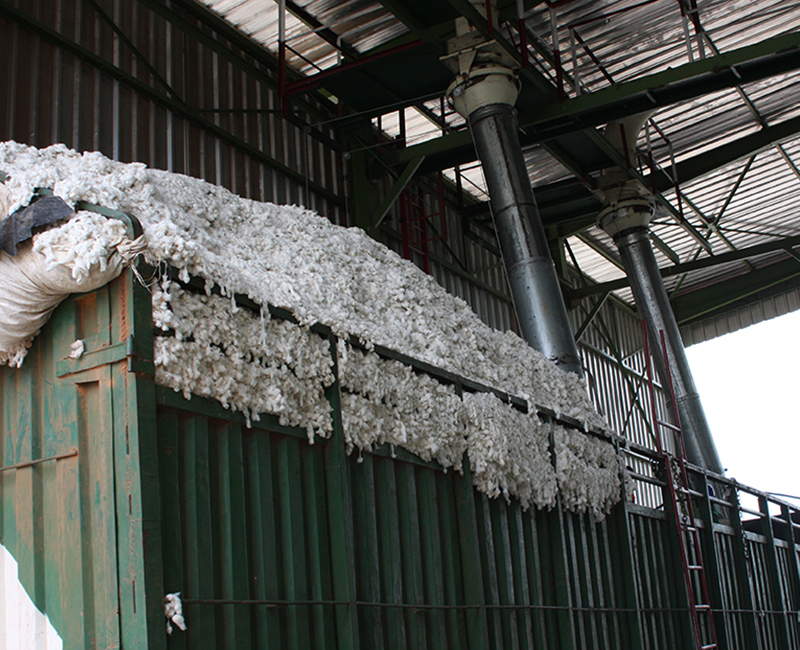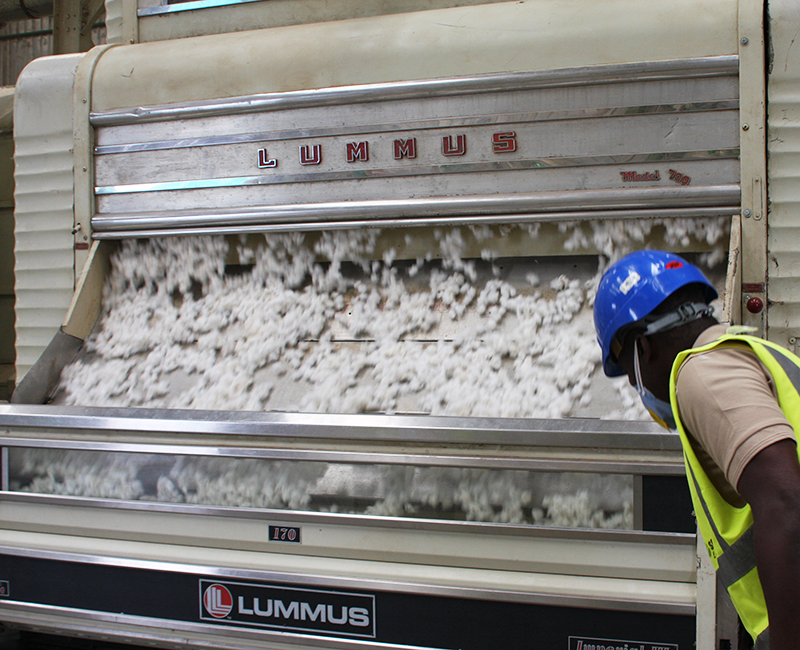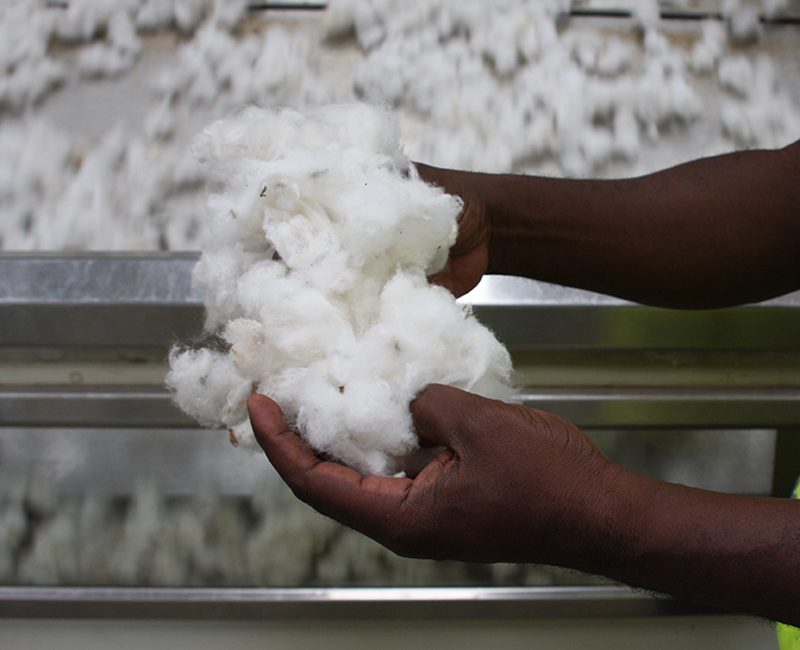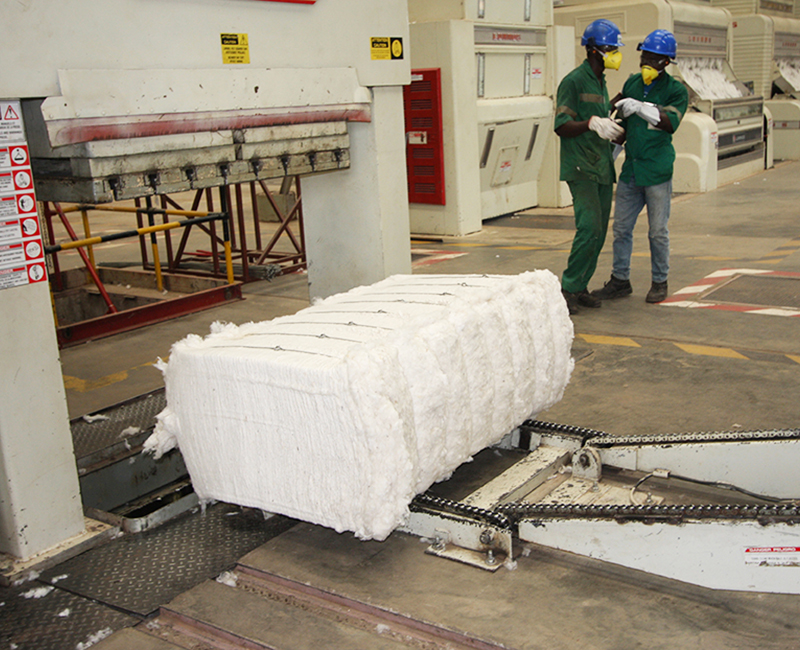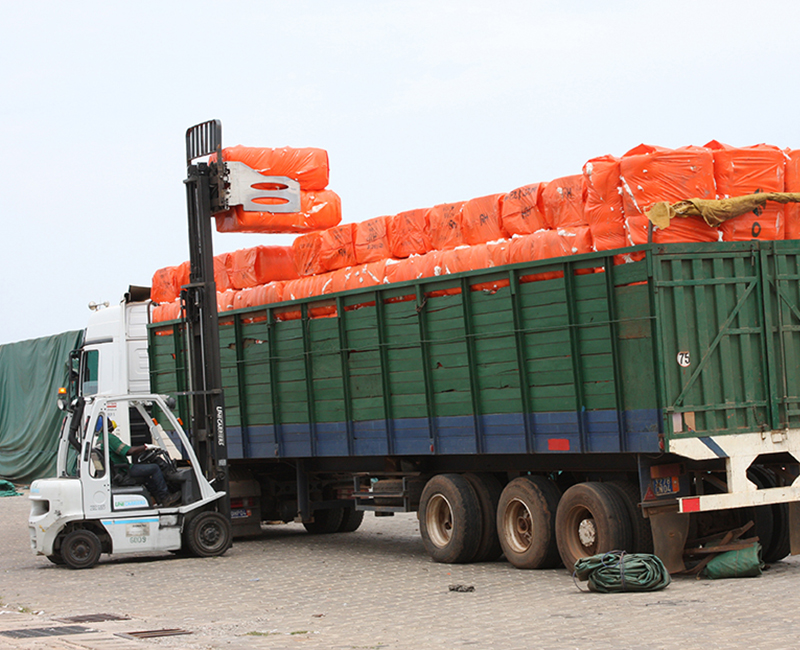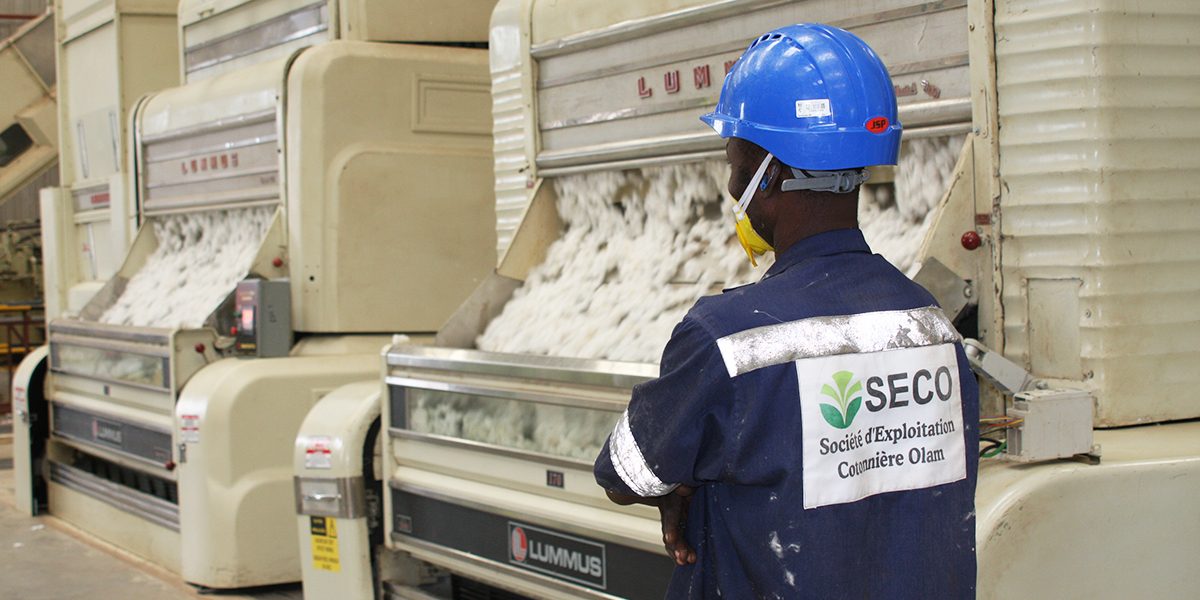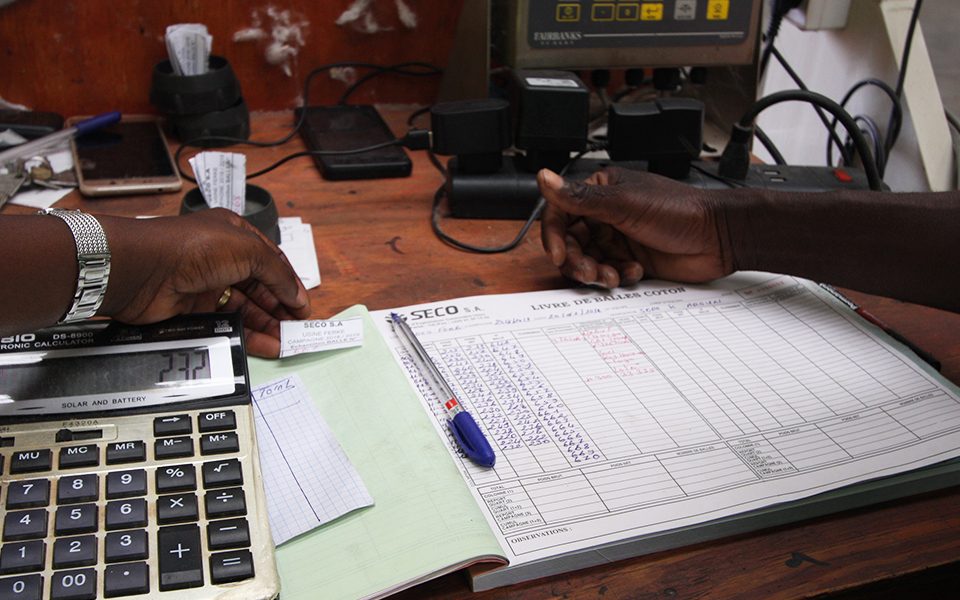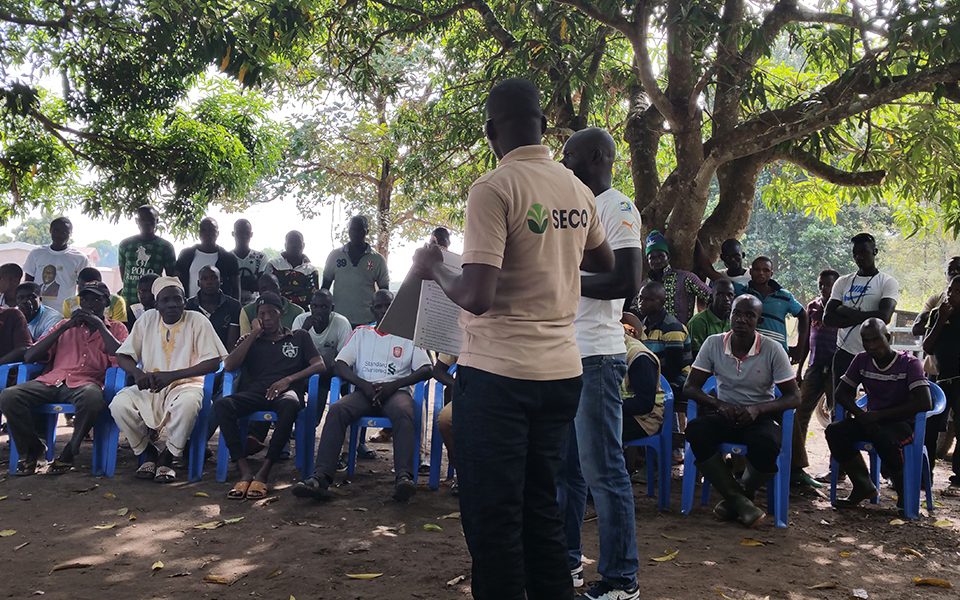The ginning process
The white flowers of a cotton plant are processed after they have ripened. They grow in a sharp-edged capsule and must be harvested by hand or machine. Then the seeds have to be removed – there are a dozen or more hard seeds in each flower. This separation process is called ginning (derived from “engine”). Since the invention of the cotton gin in 1793 in America, the process of seed removal has been carried out mechanically.
Large machines separate the pure cotton fiber (lint) from the heavier seeds, which are collected separately and used, among other things, for new plants.
The ginning process is the decisive step that turns a raw material into a precious material. The resulting cotton lint can be combed and used by the yarn and textile industries. Tina Stridde from CmiA says: “The harvested cotton can still be of good quality if the ginning factory is outdated and works poorly or if the quality of the cotton lint is inferior.”
At the end of the Ivorian civil war in 2008, SECO bought an ailing ginning factory near Ouangolo, on the border with Burkina Faso, and began overhauling it. That was the restart of ginning processing in the region. Later came the construction of another ginning factory in Ferkessédougou (Ferke), and when ginning came back to the region, cotton production in northern Côte d’Ivoire began flourishing again.
How does a ginning factory work?
We visit SECO’s large ginning factory at Ferke and are guided by Ali Sogodogo, Head of Operations, SECO, and Josia Annick Coulibaly, CR & Sustainability Officer, SECO. In the huge factory area, the big red containers immediately catch the eye – they are trucks with harvested cotton entering the facility to be weighed on a ramp. Elsewhere, forklift trucks transport welded, cleaned cotton bales to other trucks in large cuboids. In the entrance to the factory hall, a truck is in the process of being unloaded: The raw cotton is sucked from the loading area with the help of huge nozzles and transported via pipe systems to the cotton gins. Inside the factory hall, these machines stand in a row and make a deafening noise while separating and shaking the seeds from the cotton blossoms.
